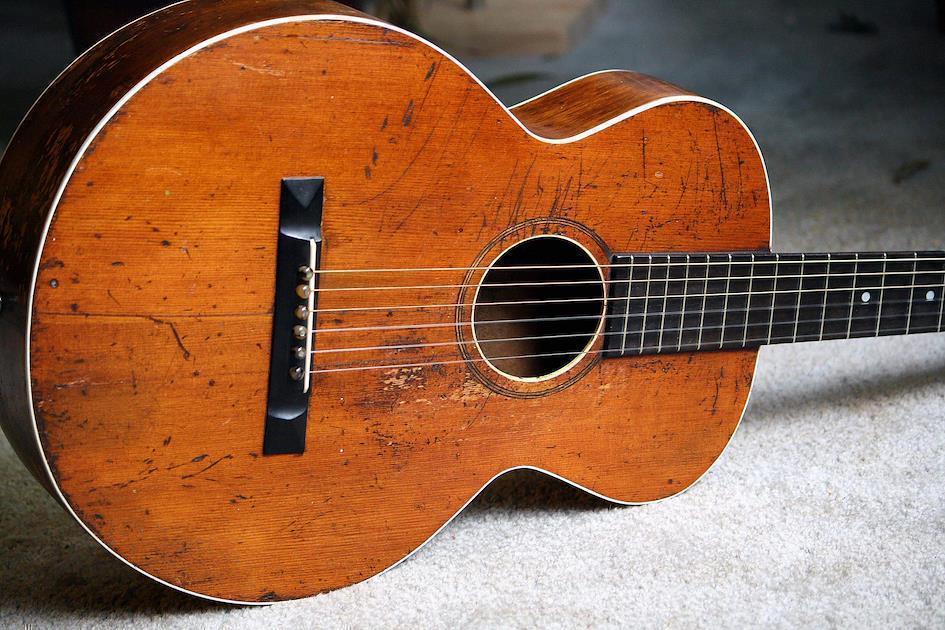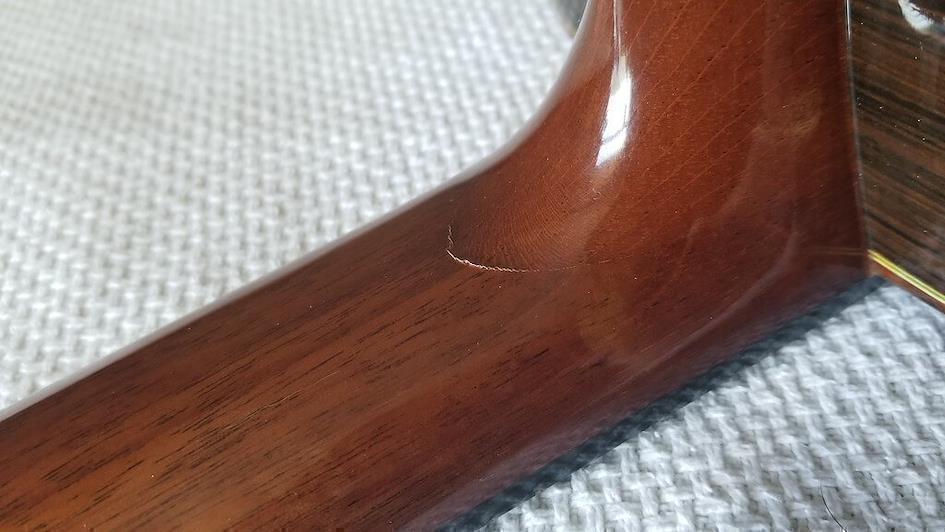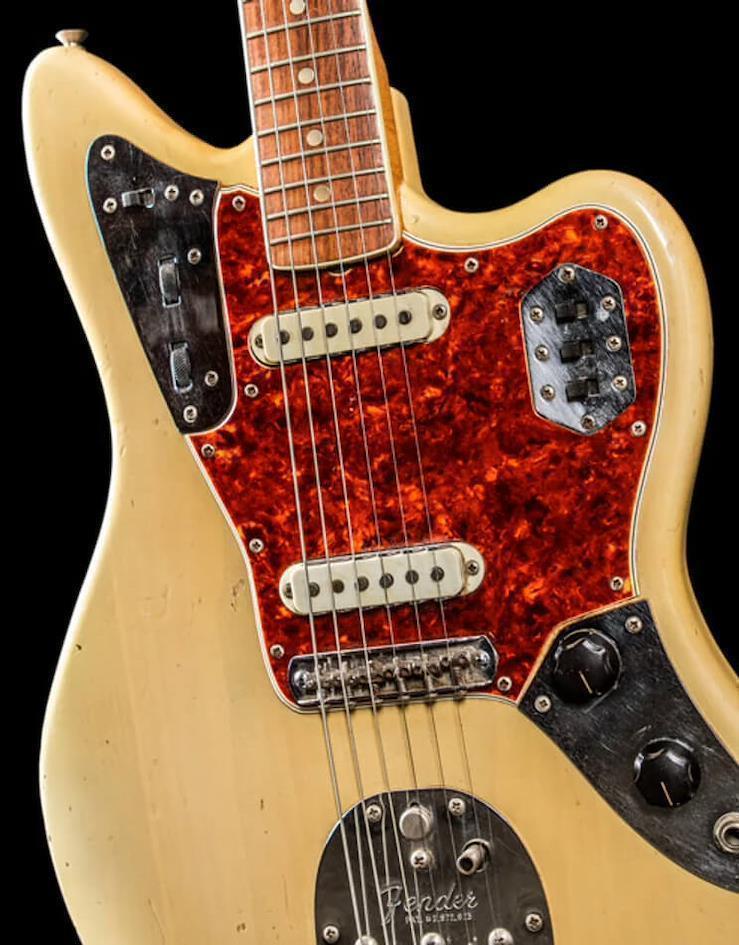[ad_1]
The process of buying a second hand guitar can be challenging. If you don’t know what you’re doing, you can easily end up with a guitar that doesn’t meet your expectations, or you might be buying a headache instead of a tool. Let’s take a moment to understand the key elements to look for, the hows and whys. Then, armed with all that knowledge, you can go and find an instrument that makes you happy for a long time.
Pros and Cons of Second-hand Guitars
Have you ever scored a great deal on a vintage t-shirt? Or maybe you snagged a hidden treasure of a chair in some flea market. Pre-loved clothes or furniture can be awesome, but what about guitars?
Some guitar brands, like Epiphone or Squier, depreciate faster than your car. That is simply a fact. It may seem like a bad thing, but actually this translates into huge savings for you. You can get a fantastic instrument, perfect for your skill level, for way less than the retail price. Those saved bucks can go towards essential extras like lessons, picks, or that awesome amp you’ve been eyeing.
Also Read: Top Vintage Japanese Guitar Brands
Also, there’s the treasure hunt. There aren’t many better feelings than the rush of finding a rare model, a vintage beauty with an incredible history, or even a guitar that held a special place in another person’s life. Plus, some woods sound better with age. You can sometimes get a fuller, more complex tone than with their brand new counterparts.
Of course, there’s always two sides to the coin. If you’re just starting the life-long journey of guitar playing, this can be overwhelming. It’s tough to tell if a quirk is a normal characteristic of a particular model or a sign of trouble. Never be afraid to walk away if something feels off. Store-bought new guitars often come with a warranty and a professional setup, giving you peace of mind and a guitar that’s ready to play right out of the box.
However, while that’s all well and good, if you’re convinced about hunting for a deal on an older guitar, here are nine things to look for.
How To Know If A Second-Hand Guitar Is Good
What about that neck?
Always check the neck first. Seriously!
The neck of the guitar is under a lot of tension from the strings, which can cause more bending than necessary if not set up correctly. Some bend is healthy, even desirable, because that’s what keeps the strings away from the fretboard. Press the strings in the first fret with your fingers, look down the fretboard, and check if you see an ever-so-slightly increasing gap between it and the strings, so that whatever fret you press, there is no string buzz against the frets. That space can be adjusted using the built-in Truss Rod, but should often be the thickness of a piece of paper; anything significantly larger than that could potentially be a symptom of a bent neck.
You can also look down from the headstock down the neck and fretboard. If you see any indication of a warp or twist, just pass on that guitar, no matter how much you like it.
Don’t forget the back of the neck. Check if you see any wrinkles or marks. Even the smallest crack can be a warning sign of an impending neck break.
The Pegs of Destiny
They may seem like some hardy pieces of metal that can never fail. But that’s not the case. The tuning pegs are complex and clockwork-like little machines, they make sure you are always on tune, and the pitch doesn’t drift. Malfunctioning or low quality pegs can make or break the sound of your instrument.
There are two things to check:
- Do they keep the strings tight?
- Do they fall apart if you remove the strings?
The answers should be ‘yes’ and ‘no’ respectively. In any case, tuning pegs are some of the cheapest thing to change and improve on your vintage-new guitar, so you can be a little less worried about them than other factors.
Also Read: All You Need to Know about Japan’s Ibanez Guitars
Fret Not
Besides the actual string, the frets are the second most touched part of your guitar. You’ll spend hundreds or thousands of hours running your fingers over them, so it’s important that they’re in tip-top shape.
Look for dinks and overly worn out frets. Also check the sides of the fretboard. Run your hands up and down the neck to make sure there are no sharp or rough spots.
The process of changing them is a very expensive and involved one. If the instrument you are looking at has issues with them, maybe you should look somewhere else, no matter how beautiful the rest of the guitar may be.
Fine Wood
If you’re a beginner, it might be hard to notice the difference between the guitar woods. You can always ask what the top is made from. If the answer is something like spruce or cedar on acoustics, or alder, ash or mahogany in electrics, you can rest assured you’re on the right track.
But maybe you don’t trust the seller, or they may not know. In that case, the most important thing to look for in acoustics is very simple: is it actually solid wood? Some acoustic guitar tops are made of plastic or laminated wood. You can check by pressing the top very softly and then releasing. Can you feel the layers of lamination?
Buy Pre-loved Guitars From Japan
Another way is to look inside the sound hole. The layers of the laminated wood can be visible with a quick check from outside, without actually having to touch the guitar. Some sellers may not like you putting pressure on the top.
No Noise-sense
If the guitar has a plug, check it!
With time and wear, electrical connections can degrade and output jacks can rust. That can cause unwanted noise when plugged in to an amp. The guitar can also have bad soldering or malfunctioning pickups. So, plug it in and wiggle the cable a little wiggle. Any noise coming out of your instrument should be made by you, not by bad electronics.
Knobs and Switches
The same thing can happen with knobs and switches. Twist them and listen for noise when doing so. Test everything!
It’s very important to try every volume and tone pot and every pickup selector setting. Some guitars, like Les Pauls, only have one pickup switch and four volume and tone knobs. In other cases, like the Fender Jaguar of Kurt Cobain fame, can have up to seven switches. Do not leave anything untested.
Action!
As mentioned before, there should be some space between the strings and the frets to avoid strings buzzing – that distance is called the guitar neck’s “action”. How much distance is a matter of taste, but too much can be a sign of a bent fretboard. It might be caused by storing the guitar with very tight strings for a long time.
Look at the side of the guitar from a distance and try to see if it’s bent. Don’t forget that inside the fretboard there’s a metal rod called the truss rod. Like a thin steel soul, it can help fix some of the bending by adjusting the neck’s tension. But no rod or tool will help if you buy a U-shaped guitar that has bent or warped too far.
Look at that Body
You can find brand new guitars that have their finish purposely worn out by hand to achieve a vintage look. They are called relic guitars. So, if some people are willing to pay extra for some rough makeup, you can let a couple of scratches go.
In any case, you should check for more extreme cases of hits and dents. Those may reveal years of abuse, and possibly hint at other issues.
Sound
Play the guitar – you need to hear it!
No two guitars are the same – even if they are from the same year, of the same manufacturer and the same model. Play it and ask yourself if it just ‘feels nice’ to the touch. Trying many guitars will slowly teach you how you like them to feel.
At the end of the day, the best guitar for you is the one you don’t want to put down.
How To Value A Second-Hand Guitar
A good shorthand to know if the price of the guitar is worth considering is this: World famous and recognized brands lose less value than the rest.
For example: You can get a Fender, Gibson or Taylor guitar of 10-15% less than the retail price. That means a huge amount of money saved, but they’re also more expensive to begin with.
Also Read: Top 5 Japanese Guitar Brands
On the other hand, more budget brands like Squier, Epiphone or Yamaha can save you over 20% by buying them used. They are also less expensive from the get go.
Second-Hand Guitar Stores In Japan
So, now you have the tools at your disposal to buy the best used guitar for the right price. But where should you look?
If you are in Japan, the Ochanomizu neighborhood in Tokyo is the place to start. Considered by some to be ‘The best place in the world to buy used guitars’, this city is famous for three things: Snowboard stores, great tea and affordable instruments.
Another classic place is the Ishibashi Music Store in Shibuya. Founded in 1938, is one of the biggest music stores in Japan. There you can find the best Japanese guitars. Also, many new, used and rare instruments in every price bracket, making it the ideal place to spend an afternoon or three.
Buy Pre-loved Guitars From Japan
Conclusion
It doesn’t matter if you are looking for a deal or if you want a better instrument for less money. Maybe you’re looking after the environment by buying used instead of brand new. The thing that matters is that you find the guitar you want to play every day.
So take your time and go play as many guitars as you can until you find it. You’ll know when you’ve picked up the right one for you.
[ad_2]
Source link







